
"My Super-Bus" • MOE Kindergartens
Overview
|
Learning Areas |
Learning Goals |
|
Aesthetics & Creative Expression (A&C) |
LG3: Create art and music and movement using experimentation and imagination |
|
Discovery of the World (DOW) |
LG2: Find out why things happen and how things work through simple investigations |
|
Language & Literacy (L&L) |
LG2: Speak to convey meaning and communicate with others |
| Refer to the Nurturing Early Learners (NEL) Framework, pp. 65 – 107, for more information on the learning areas and learning goals |
|---|
Learning Objectives
Children will be given opportunities to:
- Talk about similarities and differences between buses in the past and present based on their observations from photographs
- Create 3-dimensional artworks from imagination
#1 Playing a guessing game
Spark children’s interest by playing a guessing game with them.
How?
1. Give the children clues about the mystery object. Have them draw the object as it is being described.
For example:
Provide the children with paper and drawing materials. Give the following clues and give the children time to draw the object as it is being described:
- I have four big wheels.
- I have many windows.
- I have two doors.
- I can carry many people from one place to another.
- I have a bell. What am I?
| Getting the children to listen to the clues in order to draw and guess the object helps raise their awareness of the different parts of a bus. |
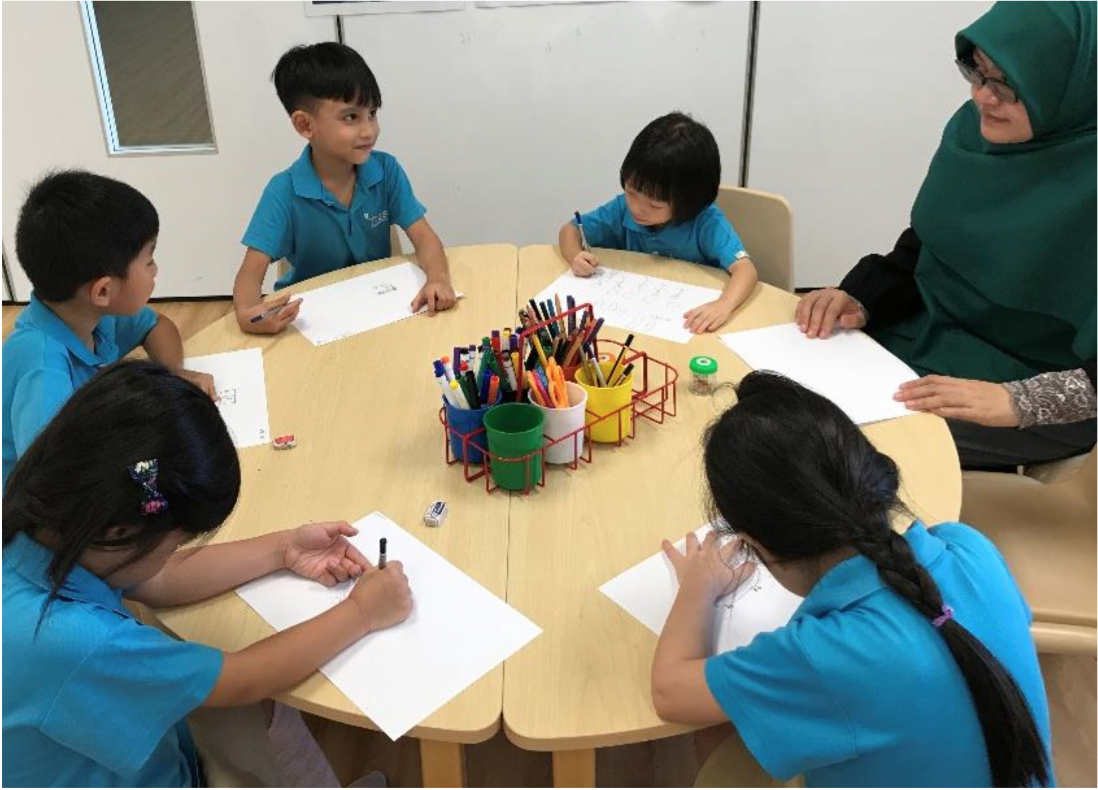
Children drawing the
object as they listen to the clues
- What do you think the wipers are for? When do you see them working?
- Why is there a bell on the bus? Have you used it before? What did you use it for?
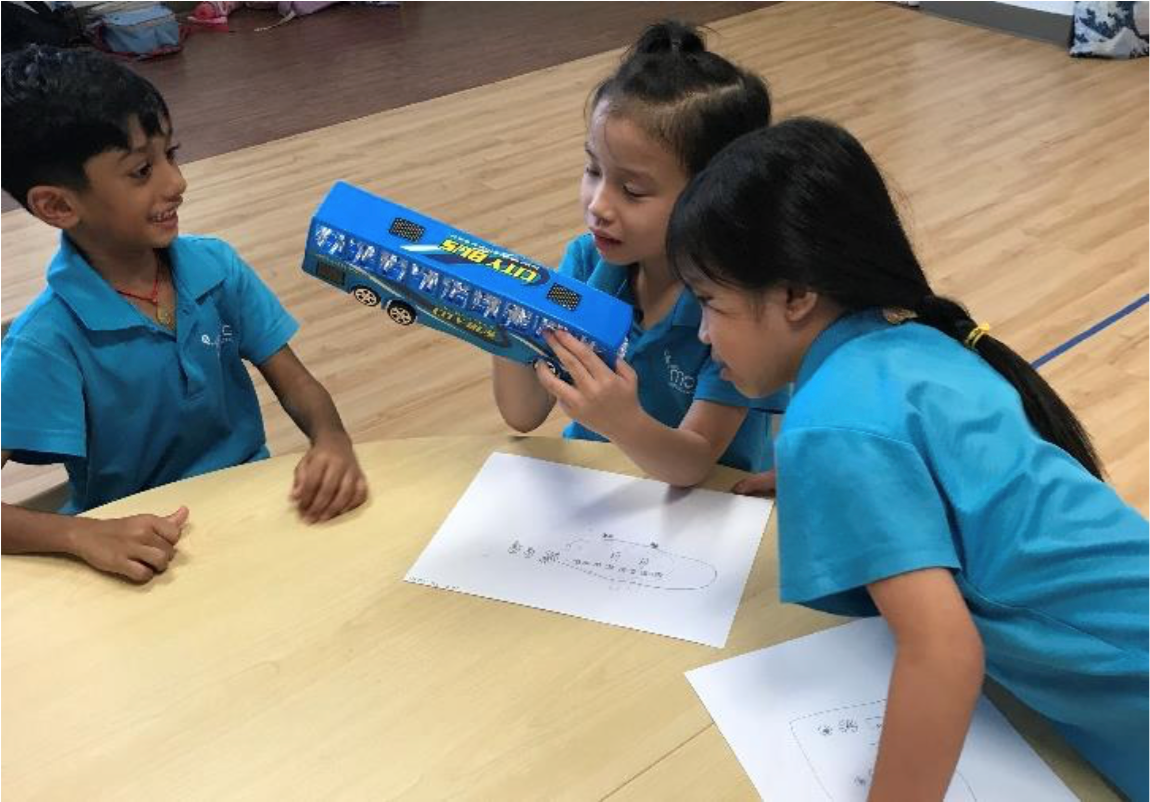
Children observing different parts of the toy bus
#2 Talking about their personal experiences
Give the children opportunities to talk about their personal experiences of taking the public transport and problems they may have encountered while riding it.
How?
1. Provide a stimulus, using it to generate discussion among the children. Record their responses using a graphic organiser such as a Venn Diagram.
| The Venn Diagram is a useful graphic organiser that helps children compare and contrast things. Refer to NEL Educators’ Guide Volume 3 (page 41 – 42) for more information and examples of graphic organisers. |
For example, show photographs of buses in the past and in the present. Get the children to compare and talk about the similarities and differences between them based on their observations.
Examples of questions:
- Based on the pictures, what can you tell about buses in the past?
- What about buses in the present?
- How are buses in the past the same as/different from buses today?
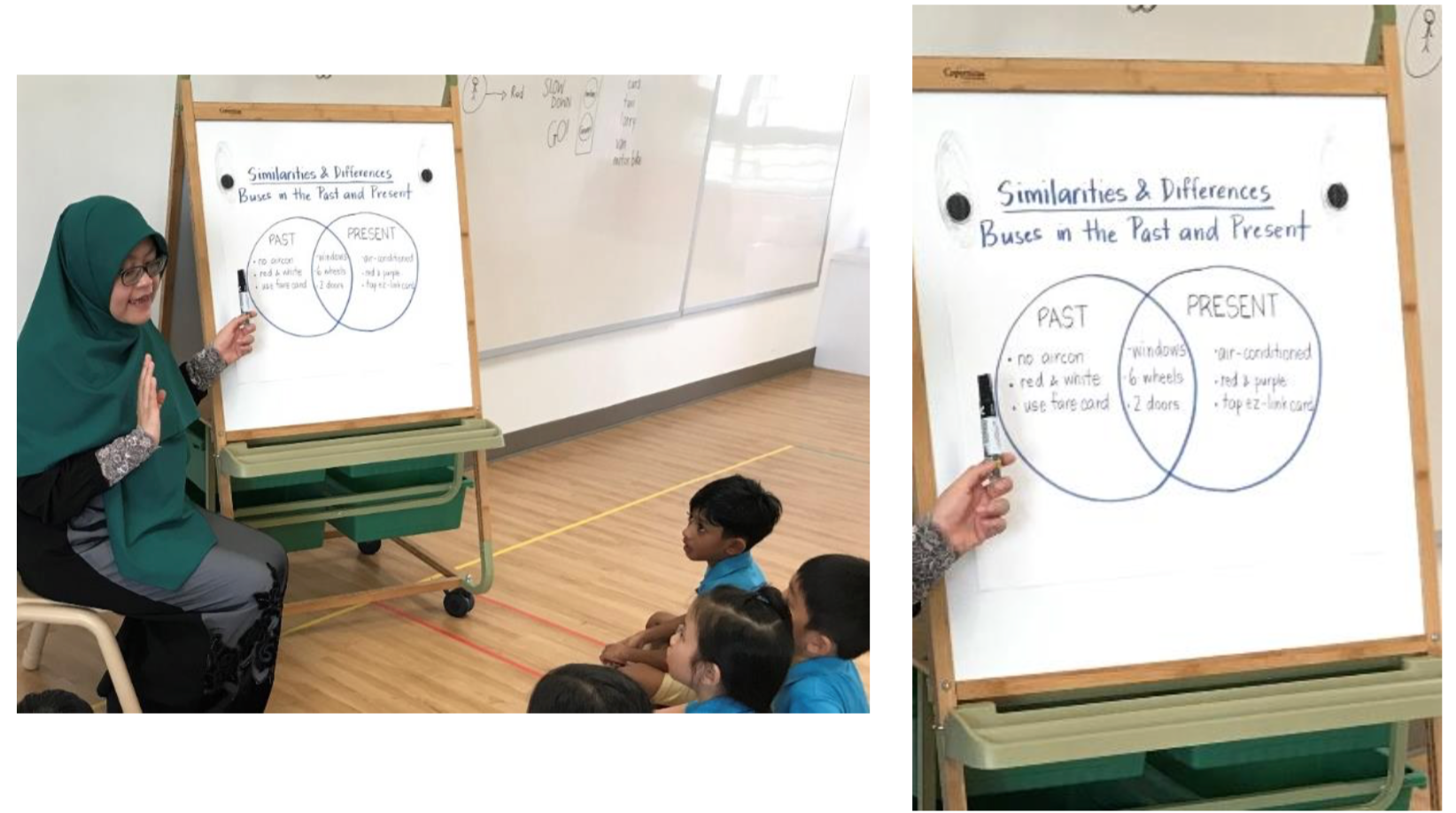
| A Venn Diagram showing similarities and differences between buses in the past and present in Singapore |
2. Encourage the children to recount their personal experiences of taking the public transport.
For example, get the children to talk about their experiences of taking the bus and problems they faced (e.g., insufficient seats for everyone and trouble getting on a crowded bus). Make a list of the problems based on their responses.
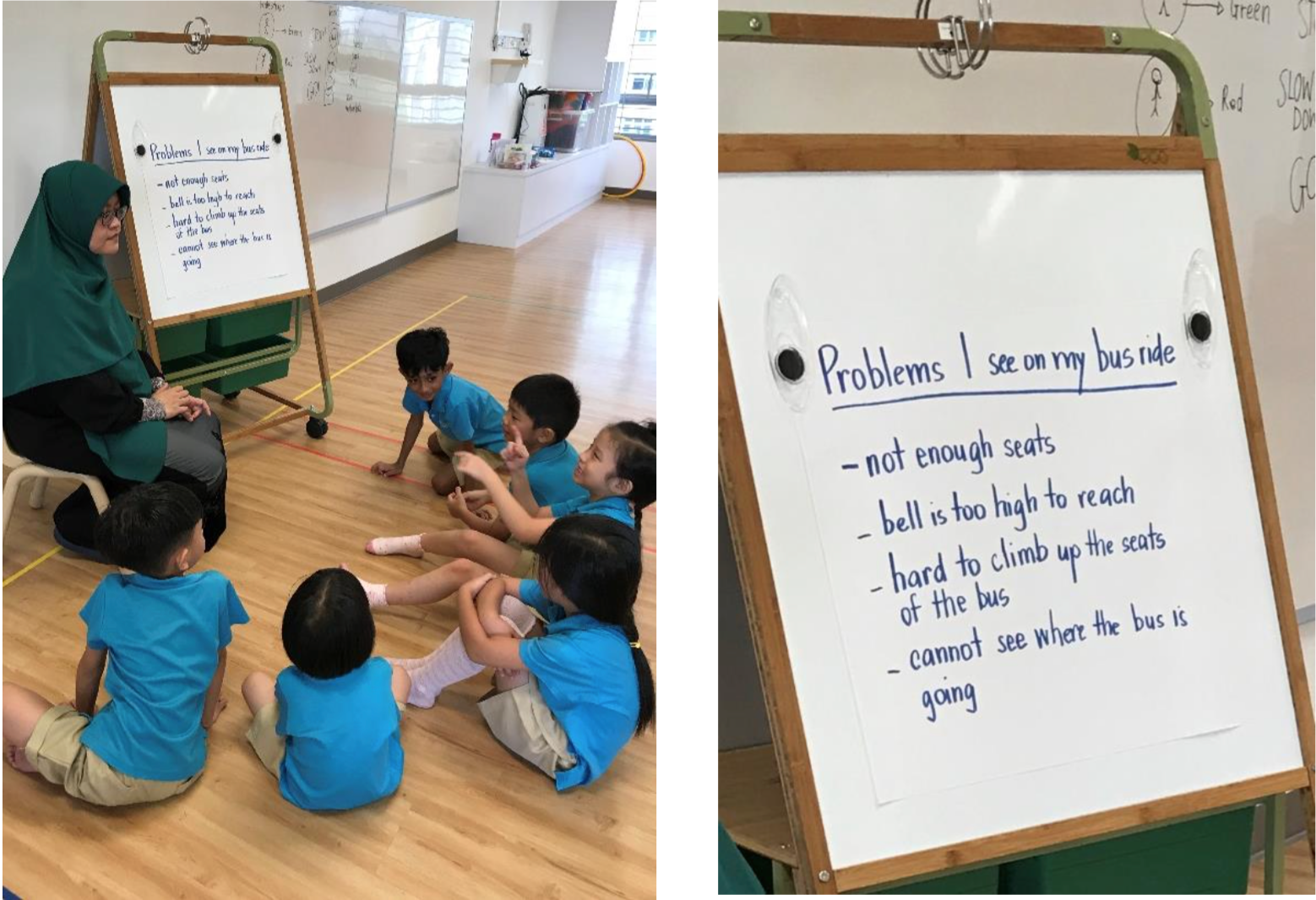
#3 Creating their own “super-bus”
Have the children suggest different ways of solving the problems they encountered. Allow them to bring their solutions to “life” by creating a 3-dimensional model.
How?
- For example, encourage the children to suggest different ways of solving the problems by showing openness to their ideas and solutions. Use this opportunity to nurture the learning disposition of “inventiveness”.
Refer to “Nurturing Learning Dispositions: Curriculum Resources for Kindergartens” for more information on the learning disposition of “inventiveness”. |
Have the children think about what their “super-bus” would look like. Get them to sketch their bus from imagination and encourage them to add details to their sketches.
Provide a variety of recyclable materials. Get the children to refer to their sketch and use the materials to create a 3-dimensional model of their bus.
- Invite the children to show the 3-dimensional model of their bus. Encourage them to talk about their bus, focusing on the features that make it a better bus for everyone.
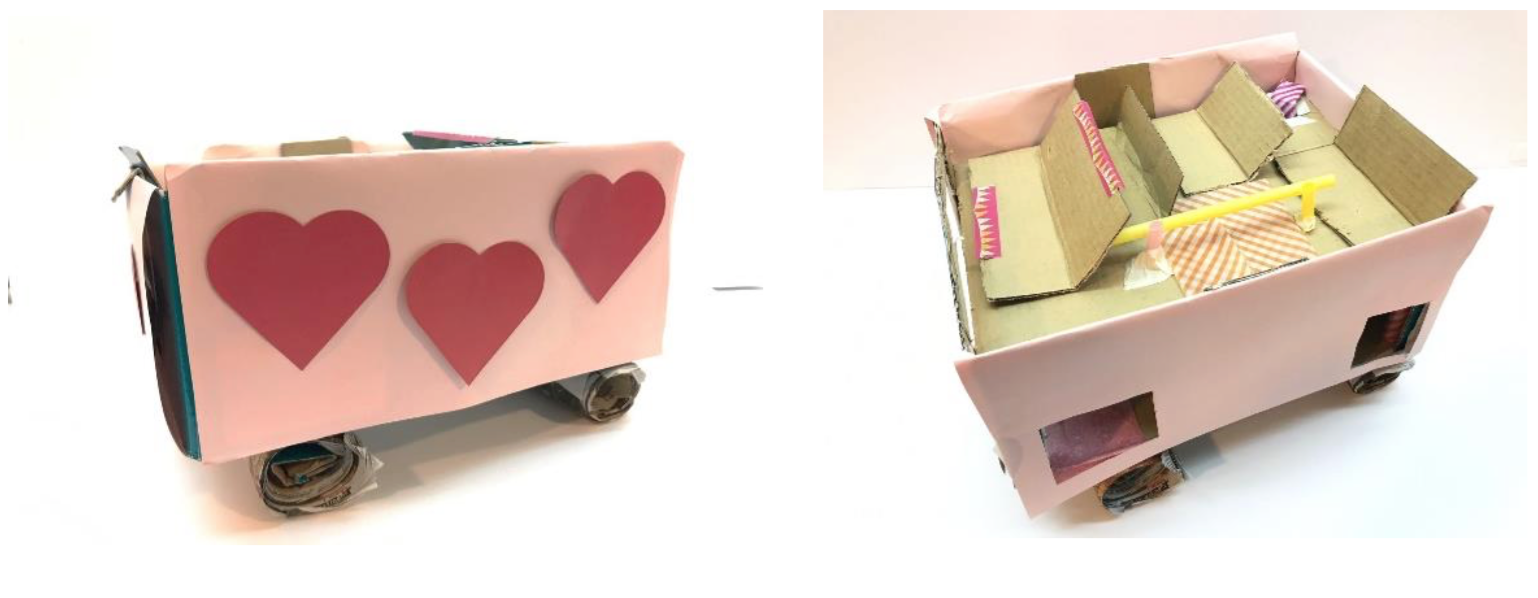
A 3-dimensional model of a “super-bus”